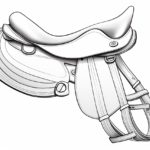Drawing is a wonderful way to express your creativity and bring your imagination to life. In this step-by-step guide, we will learn how to draw a swing. Whether you want to create a whimsical scene or capture a nostalgic moment, this tutorial will help you master the art of drawing a swing. So, prepare your pencils and let’s get started!
Materials Required
Before we begin, it is important to gather the necessary materials. Here’s a list of items you will need:
- Drawing paper
- Pencils (HB, 2B, and 4B)
- Eraser
- Ruler
- Colored pencils or markers (optional)
Now that you have everything you need, let’s dive into the drawing process.
Step 1: Sketch the Frame
Start by drawing two parallel lines to represent the ground. These lines will serve as a reference point for the swing’s height. Next, draw two vertical lines extending from the ground lines to form the posts of the swing. Make sure they are evenly spaced and of equal length.
Step 2: Add the Crossbeam
Connect the tops of the two vertical lines with a horizontal line to create the crossbeam of the swing. This line should be parallel to the ground lines and slightly longer than the distance between the two vertical lines.
Step 3: Outline the Seat
On the crossbeam, draw a rectangular shape to represent the swing seat. This shape should hang down from the crossbeam and be slightly curved to give it a natural appearance. Make sure the edges of the seat are parallel to the ground lines.
Step 4: Define the Chains
Attach two chains to each end of the swing seat. Start by drawing short vertical lines from the corners of the seat, extending below the ground lines. Then, add horizontal lines at the bottom of the vertical lines to represent the chains. Repeat this process on the other side of the swing seat.
Step 5: Add Detail to the Frame
To enhance the realism of the swing, add details to the frame. Draw diagonal lines from the top of each swing post to the top of the crossbeam to form supports. Next, add diagonal lines on each side of the seat to create the appearance of fabric or ropes. Finally, erase any unnecessary lines.
Step 6: Shade and Texture
Now that the basic structure of the swing is complete, it’s time to add shading and texture to bring it to life. Start by shading the posts and crossbeam to give them dimension. Use a darker pencil, such as a 4B, to create shadows on the underside of the swing seat and the areas where the chains connect to the seat. For added texture, lightly shade the seat to resemble fabric or wood grain.
Conclusion
Drawing a swing is an enjoyable and rewarding experience. By following these step-by-step instructions, you have learned how to create a realistic and charming illustration of a swing. Remember to experiment with different techniques and materials to make your drawing unique. So, grab your pencils and let your imagination soar as you bring swings to life on paper!









